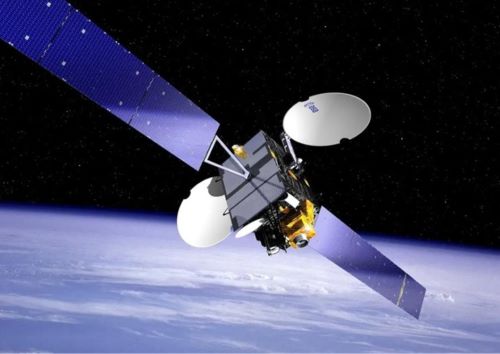Context
India’s strategic foray into space has witnessed a monumental leap with the advent of NavIC, the indigenous satellite navigation system. Positioned as a formidable contender in the realm of global satellite navigation, NavIC 2.0 emerges as a transformative upgrade, bolstering India's defence capabilities and elevating its stature on the international stage. This next iteration of NavIC not only solidifies India's strategic space advantage but also paves the way for unparalleled precision and reliability in positioning, navigation, and timing (PNT) services.
|
DO YOU KNOW? NavIC, currently comprising a constellation of 10 satellites, has been instrumental in providing precise and secure PNT services within India and its neighbouring regions. However, with the impending arrival of NavIC 2.0, India is poised to transcend the boundaries of regional navigation and establish itself as a global leader in satellite navigation technology. The strategic imperative behind NavIC 2.0 underscores India's commitment to self-reliance and technological advancement, positioning the nation alongside established players like the US (GPS), Europe (Galileo), Russia (GLONASS), and China (Beidou). |
Evolution of NavIC: From Genesis to NavIC 2.0
The genesis of India's foray into satellite navigation can be traced back to 1999, with the inception of the Indian Regional Navigation Satellite System (IRNSS). However, it was the exigencies of the Kargil conflict that underscored the critical need for an independent satellite navigation system, culminating in the development of NavIC. Initially conceived for strategic purposes to ensure self-reliance in times of crisis, NavIC gradually evolved to offer civilian services, harnessing the same space and ground infrastructure. The constellation, comprising the first-generation series, encountered inherent limitations ranging from signal penetration to infrastructural compatibility, necessitating a strategic overhaul to sustain and enhance NavIC's capabilities.
The recent launch of the first second-generation satellite, NVS-01, heralds a significant milestone in the evolution of NavIC. Incorporating state-of-the-art technology including indigenously developed atomic clocks and enhanced encryption systems, NVS-01 elevates the precision, resilience, and performance of the NavIC system. By introducing the L1 frequency band for civil mobile usage, NavIC 2.0 expands its reach and usability, especially in challenging environments such as urban canyons and dense foliage. This strategic leap underscores India's unwavering commitment to technological innovation and self-sufficiency in satellite navigation.
Strategic Imperatives: Fortifying NavIC for Global Dominance
The strategic imperative behind NavIC 2.0 extends beyond mere technological advancement, aiming to position India as a dominant player in global satellite navigation. Presently, NavIC operates with only five fully operational satellites, underscoring the critical need for expansion and enhancement to achieve global navigation dominance. The impending completion of the lifespan of IRNSS-1B and 1C necessitates immediate replacement launches, highlighting the urgency of fortifying the NavIC constellation to ensure seamless and accurate navigation services.
NavIC 2.0 represents a strategic shift towards a comprehensive global PNT solution, transcending the confines of regional navigation. The proposed combination constellation, incorporating both Geosynchronous Orbit (GSO) and Medium Earth Orbit (MEO) satellite layers, offers enhanced coverage, flexibility, and resilience. While the MEO fleet provides seamless global PNT coverage and Earth surveillance capabilities, the GSO fleet enhances military applications and strategic surveillance over the Indian subcontinent. This strategic roadmap underscores India's commitment to strategic self-sufficiency and technological innovation in the realm of satellite navigation.
Technological Advancements: Enabling Strategic Self-Sustenance
Achieving strategic self-sufficiency in PNT services necessitates not only the expansion of the NavIC constellation but also the evolution of the ground segment infrastructure. Integration of automation, Artificial Intelligence (AI), and Machine Learning (ML) technologies is imperative to revive and fortify the user segment, ensuring robust and secure navigation services across military platforms. The transition from open-source GPS to secure indigenous NavIC user modules is essential to establish an extensive and comprehensive user base, bolstering India's strategic capabilities in navigation, targeting, and command and control.
The strategic roadmap for NavIC 2.0 outlines a synchronized blueprint encompassing space, ground, and user segments, culminating in enhanced global coverage features. With the replacement of aging satellites and the launch of additional MEO satellites, NavIC is poised to expand its reach and efficacy on a global scale. The evolution of a high-speed, secure network for strategic control centers and integrity monitoring stations underscores India's commitment to fortifying its satellite navigation infrastructure. By standardizing military-grade user modules and enhancing service offerings, NavIC 2.0 is poised to revolutionize India's navigation capabilities and secure its place among global leaders in satellite navigation technology.
Conclusion
NavIC 2.0 represents a paradigm shift in India's strategic space endeavors, propelling the nation from regional navigation to global dominance. The strategic imperatives driving NavIC 2.0 underscore India's commitment to technological advancement and self-reliance in satellite navigation. With a comprehensive roadmap encompassing space, ground, and user segments, NavIC 2.0 is poised to revolutionize India's navigation capabilities and secure its place among global majors in PNT services. As India embarks on this transformative journey, NavIC 2.0 emerges as a testament to India's unwavering commitment to technological innovation and national space security.
|
Probable Questions for UPSC Mains Exam 1. Discuss the significance of NavIC 2.0 in bolstering India's strategic capabilities in satellite navigation technology. Highlight the key features of NavIC 2.0 and elucidate how it positions India on the global stage of PNT services. (10 marks, 150 words) 2. Critically evaluate the strategic roadmap outlined for the evolution of NavIC 2.0, encompassing space, ground, and user segments. Analyze the challenges and opportunities associated with the transition from regional navigation to global dominance, emphasizing the implications for India's national security and technological self-reliance. (15 marks, 250 words) |
Source – ORF







